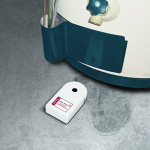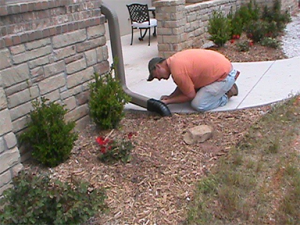
After the torrential downpour last week we received lots of calls about issues with water in basements. Although some issues are unavoidable, we wanted to give you a quick list of things you can do to help protect against issues the next time a big storm rolls into town.
- Check your sump pump – if you don’t regularly hear your sump pump running, it’s a good idea to check it occasionally by pouring water into it. Get a 5 gallon bucket of water, and slowly (about the rate rain water might enter) pour the water in until the float triggers your pump to activate. At this point you are hopefully watching the water level drop, and successfully shut back off when your float drops back below the shutoff level. If that’s not what happens, troubleshoot and repair/replace as needed.
A good fail-safe is to buy some electronic water detectors and set them by your sump pump or other places where you have previously had water enter your home. You can find them on amazon here.

- Other things to check about your sump pump:
- Stuck float valve. Sometimes you can just step on the top of your sump pump pit and it will dislodge it.
- Failed Check Valve. This is quite common actually.
- Someone unplugs your pump – Well… yes, this happens. Basements don’t have a lot of plugs. Someone runs an extension cord from your sump pump outlet and forgets to plug the pump back in when they’re done. Check it!
- Discharge pipe – be sure that your discharge pipe is emptying water far enough away from your foundation
- Check the grading around your home to make sure water is running away and isn’t pooling next to the foundation. A good rule of thumb is to try to maintain a 1″ slope for every 12″ into the yard.
- Check your downspouts – In addition to grading sloping away from your house, make sure your downspouts are directing water far enough away from your home instead of dumping it around your foundation. You can either bury the downspouts and disperse it 4-5′ away from the house or add an above-ground extension to route water to the correct places.

- Consider upgrading your gutters – If you have regular water issues, you may need to upgrade your gutters to a larger size. Larger gutters allow more water to channel into the downspouts with less spilling over and onto the foundation. If you don’t want to replace all of your gutter, just adding larger downspouts can also help.
One additional checklist item that you may want to look into before the next storm is to make sure you’ve had an arborist look at your trees to remove any dead limbs or other limbs that would be more likely to fall during high winds.
We hope this list helps avoid some heartache in the future, but if you do end up with problems or if you have questions, please don’t ever hesitate to call us for help!

